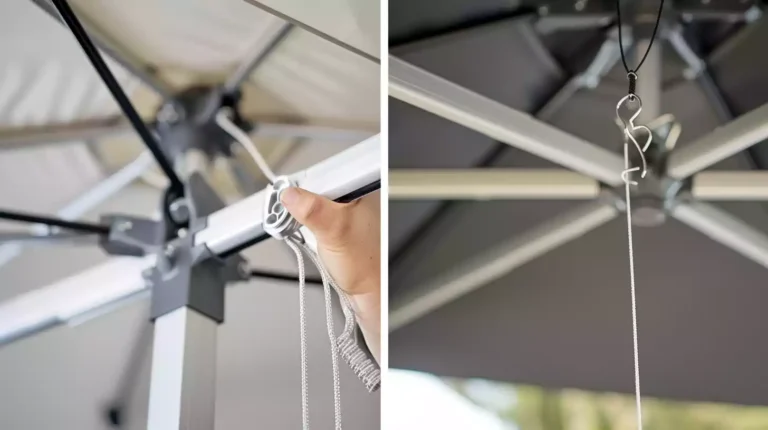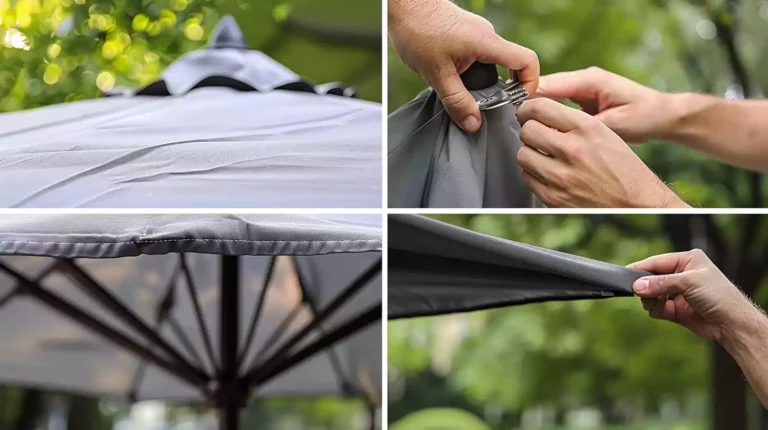Simple Guide To Sharpening Your Pruning Saw
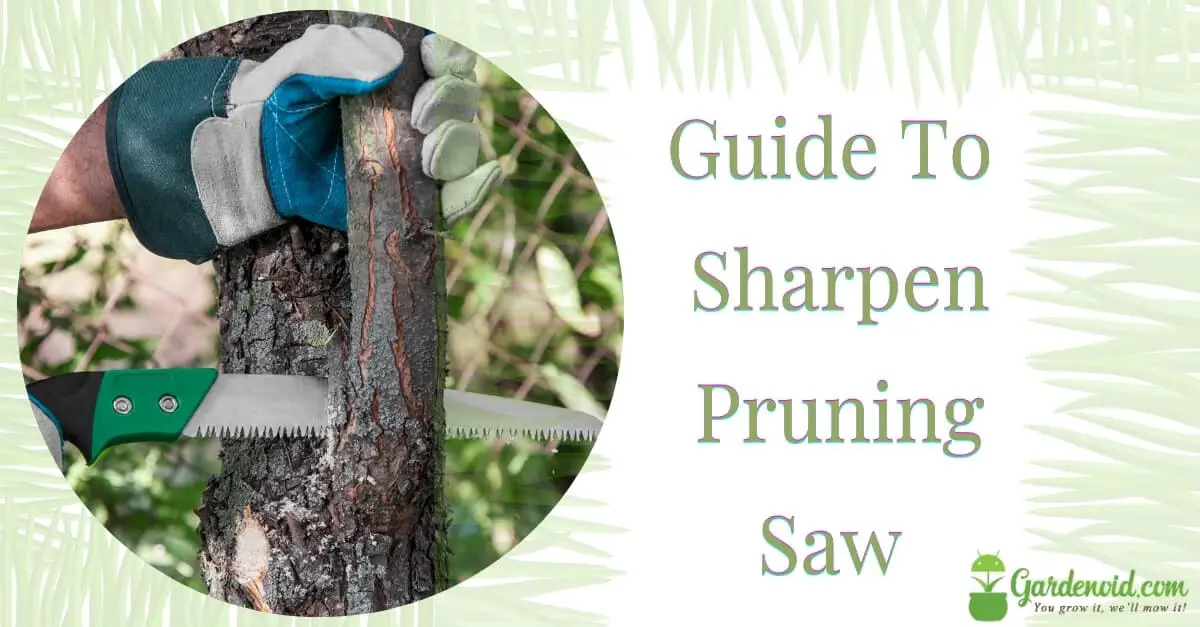
If you’re a gardener, one of the skills that you need to learn is how to sharpen the pruning saw.
The pruning saw is a very useful garden tool. Aside from making your plants look attractive, pruning also improves the health and productivity of both the flowering plants and fruiting shrubs.
When doing the pruning work, you will get excellent results if you use a sharp pruning saw. But just like with the other sharpening tools, the saw could get dull after repeated use. Thankfully, the process of sharpening the saw is pretty easy.
With the right tools and materials, you should be able to sharpen the blades of the saw and make it sharp once again.
[toc]
What is a Pruning Saw?

Image Credit: Milled.com
Before we go into the details of how to sharpen a pruning saw, let us first understand what exactly is a pruning saw.
A pruning saw is a garden tool with the same blade as the saws used for cutting lumber. But this tool is only intended for trimming trees and shrubs. It is stronger than pruning shears and other tools used for trimming.
The pruning saws help gardeners trim larger shrubs as well as trees with smaller branches. If you are wondering when you should use the pruning saws, here’s a good rule to consider – if the branch or trunk you needed to trim is less than 1.5 inches in diameter, use a hand pruner. But if the wood is thicker, it is best to use a pruning saw.
Different Types of Pruning Saws
There are many different types of pruning saws. Each type is intended to be used for a specific stem or branch. Make sure you are using the right pruning saw for the job to get excellent results.
Here are some of the most common types of pruning saws:
1. Handheld Pruning Saw

Image Credit: Amazon
The handheld pruning saw is the most popular of all types of pruning saws. As the name suggests, this tool is handled by hand. It is what gardeners would use in pruning both indoor and outdoor plants. This comes with a straight or slightly curved blade. Although it’s capable of cutting thick branches, these types of pruning saws are best used for cutting smaller and thinner branches.
Handheld pruning saws are very versatile and are useful for trimming flowering shrubs and trees. For many gardeners, this is the pruning saw that they would use in trimming low-lying branches. This tool is very portable and can be stored easily since they usually come in a folding design.
2. Straight Blade Pruning Saw

Image Credit: Amazon
As the name implies, a straight blade pruning saw is one that comes with a straight blade. Although pole saws that have straight blades may also fit this description, a straight blade pruning saw is mostly associated with those that come with regular handles.
The straight blade pruning saw is the best tool to use when dealing with sap and greenwood. Even though they have a straight blade, their handles are usually curved. One of the most distinctive features of a straight blade pruning saw is that the curved handle is similar to that of a pistol grip and is comfortable to hold.
3. Curved Blade Pruning Saw
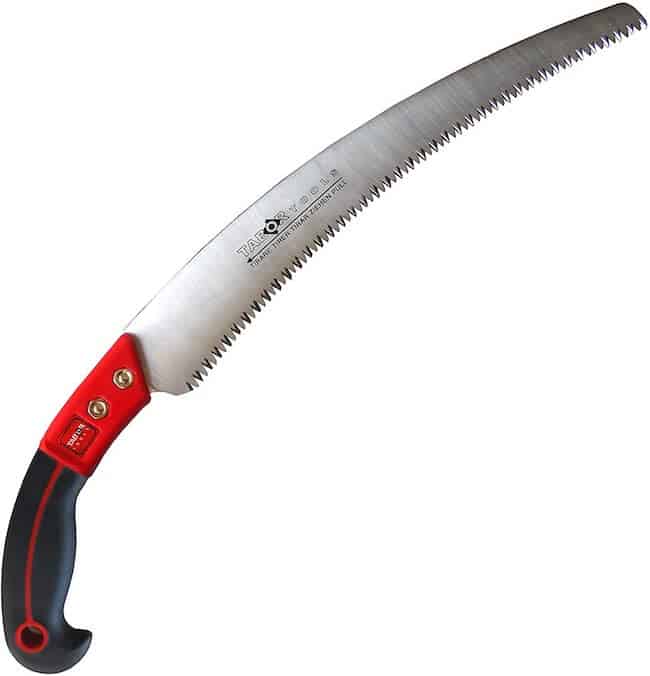
Image Credit: Amazon
Understandably, a curved blade pruning saw is something that comes with a curved blade. The curve design adds some toughness to the pruning saw, making it ideal for heavy-duty trimming work.
With the curved blade pruning saw, you have the option to go for the blade with fine teeth or coarse teeth. The blade with fine teeth is ideal for small home gardening and nurseries. But for heavy-duty cutting, the saw with coarse teeth is the best.
4. Pole Pruning Saw
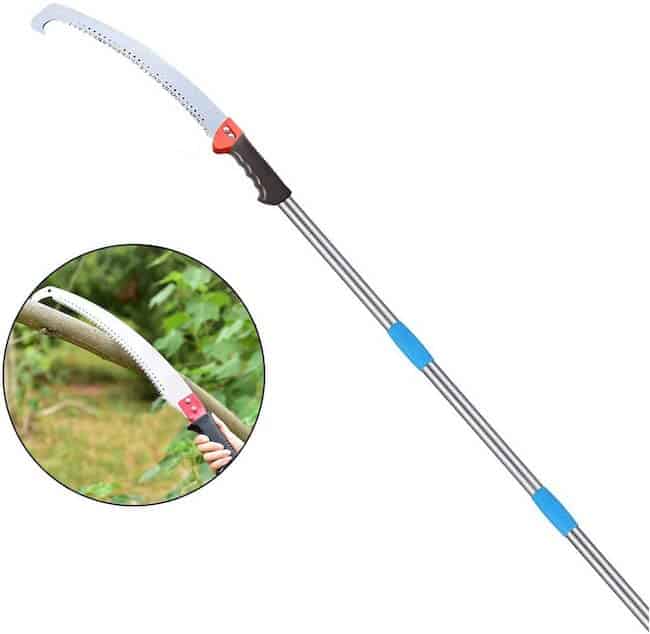
Image Credit: Amazon
Pole saws are the best option when it comes to dealing with tall trees that have hard to reach branches. These saws usually come with a long pole that has a blade at the end. Some of the best pole pruning saws are equipped with a rotating or tilting blade, which allows the user to position the blade at an angle.
Pole pruning saws are great, but they have reduced cutting power due to their length. But they make up for this by having a much stronger jaw, which makes trimming seem effortless.
Tools Required to Sharpen a Pruning Saw
Now that you know a bit about pruning saws, it’s time to learn some ways to sharpen the saw. But first, you need to prepare the tools needed for this task. These are the tools you need to sharpen your pruning saw:
- Work gloves – use a pair of thick gardening gloves to protect your hands from the blade of the pruning saw.
- Steel Brush – if you don’t have a steel brush, it is best to buy one since it’s very useful for a variety of applications.
- Rags – you can also use a washcloth. This will be used to wipe the blade of the pruning saw.
- Clamps or vise – the clamp will hold the blade in place to ensure safety when sharpening the saw.
- Soap – before sharpening, the blade must be washed and cleaned. Aside from soap, you can also use a foaming bathroom cleanser.
- Kerosene – the kerosene will be used for removing saps from the blade.
- File – since the pruning saw has unusual blades, a special type of file will be used, known as the Cant file. Any type of triangular cross-section file can also be used.
- Oil – after sharpening the pruning saw, the oil must be applied to its blade before storage. This is to prevent rusting.
How to Sharpen a Pruning Saw?
Once you have all the tools ready, it’s time to start. So here are the steps on how to sharpen a pruning saw.
Step 1 – Clean the Saw
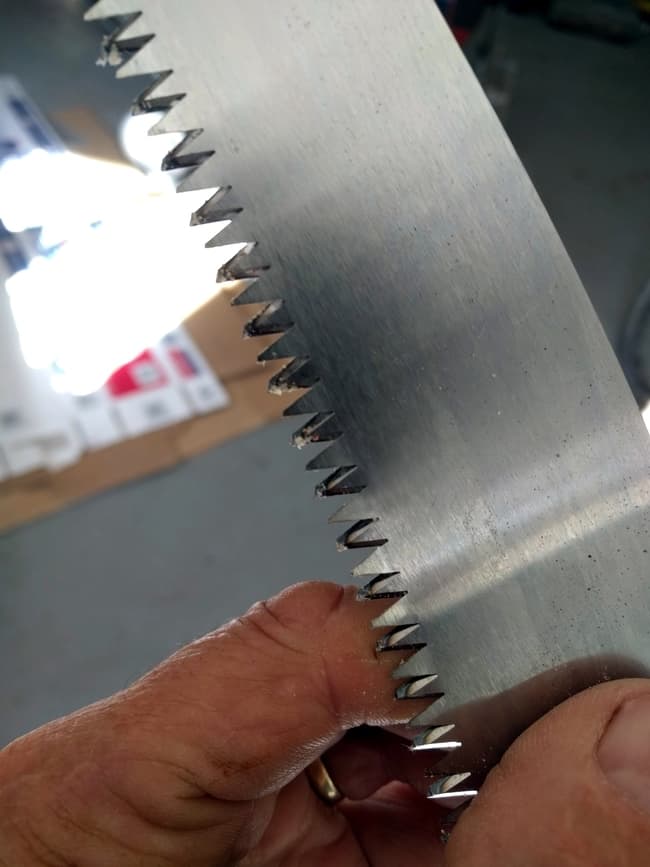
Image Credit: University of California
Before you handle the saw blade, make sure you wear a pair of thick gloves. Even if the saw blade is already dull, it could still harm your hands if you don’t wear gloves.
Before you start to sharpen, make sure the saw is clean. Grab a stiff brush, preferably something made of steel. You also need soapy water or a foaming bathroom cleanser. Wash the blade with soapy water, then clean it with a brush. Go in between each tooth to remove any dirt and debris.
If there’s sap on the pruning saw, clean it off using kerosene. Wet the cloth with kerosene and wipe it onto the spots of sap until they are removed.
Step 2 – File the Teeth

Image Credit: Ali Express
As you can see, the pruning saw has very unusual teeth. Therefore, this gardening tool requires a special type of file to sharpen its blade. In this case, you need to use a Cant file or any type of triangular cross-section file.
If you do not have a Cant file, it is best to buy one. Saw sharpening must be done several times because the pruning saw could get dull after several uses.
To file the saw, clamp it into a firm surface or slip it into a vise. Make sure it has a good grip to ensure your safety.
Next, get the Cant file and start filing from the rear and work your way to the tip. Sharpen the edges of the teeth one by one. Hold the file at a 30-degree angle to the saw as you sharpen. Keep on adjusting the blade in the vise or clamps so you will not have to work on any area that is not tightly secured as this could chip the teeth.
When filing, give each tooth the same number of strokes as you go on. Eight strokes should work for regular touch-ups. If the saw is mildly dull, 15 strokes should be fine. But for extremely dull pruning saws, 20 strokes for each blade should apply.
Step 3 – Unclamp the Blade and Clean before Storage
Upon reaching the tip of the blade, unclamp the blade. When you’re done with sharpening the blade and you are satisfied with the results, clean the pruning saw once again. Rub it with a light coat of oil before storage. The purpose of rubbing the oil is to prevent the blade from rusting.
Final Thoughts
The process to sharpen pruning saw is easy. But your safety should be a priority. Aside from wearing a pair of thick hand gloves, you might consider wearing eyeglasses to keep your eyes protected. Another safety tip to keep in mind is to make sure that you purchase the proper file for sharpening the blade.
For pruning saws, the Cant file is highly recommended. This tool is specially designed to sharpen large and unusual teeth.
Hopefully, you have learned a lot from this article. Owning a pruning saw is great for gardeners. But you should also know how to take good care of it, especially in sharpening its blade.

